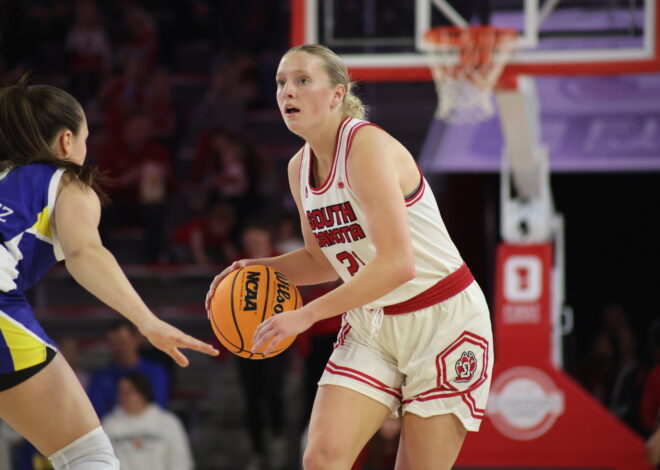
Support the Coyote women athletes
Throughout history, women’s sports have never been respected as much as men’s sports. Research has found that men’s athletics gets more coverage and status, and according to an article from BBC their salaries are higher.
Even USD has its own issue with a gender bias in athletics. According to goyotes.com, the men’s basketball team on average draws around 400 more people to their games than the women’s games. Why is this?
I’ve been to almost every home basketball game this spring semester, and the amount of students who show up to men’s games versus the women’s games is disproportionate. The latest games have nearly closed the gap on attendance, but before the men and women were at the top of the league it was a different story.
On Jan. 13 the Coyote women battled Fort Wayne at home and a crowd of 2,016 watched. Only a couple of days later, the men’s team played the Oral Roberts Golden Eagles in the Sanford Coyotes Sports Center and brought in 2,351 viewers. That’s a difference of over 300 people.
The women’s team has a Summit League record of 10-0 and has had a 13-game winning streak. They also are no. 1 in the conference, and have many talented players who work very hard to compete against other skilled teams.
The men’s team is also having a successful season – just not as successful as the women. The men’s record is 8-2 in the Summit League and they are second in the conference, right behind SDSU.
Women’s basketball isn’t the only place where this gender bias happens of course. Women’s soccer in the U.S. has been controversial for its large gender pay gap, and this particular situation has brought light to the obstacles that women’s sports have.
Events like National Girls & Women in Sports Day help raise awareness to this disproportion, but it’s eventually up to the consumers to change their habits and make a difference. It’s not like students have to pay a fee; they get in for free for all the sporting events. I encourage more students to attend women’s sports here at USD, especially since they put so much hard work into their craft.
More headway is being made as society continues to grow and recognize biases, and I can’t wait until women’s sports are given the same spotlight that men’s are.
Senior Taylor Steinfeldt participated in USD’s clinic, and also has hope for the future of women’s sports.
“I think we’re going to see it grow even more than what it has,” Steinfeldt said. “I think a lot of the women in professional sports aren’t documented or aren’t marketed enough. I think if that comes out more, then you’re gonna see a lot more females wanting to be those professional athletes.”

